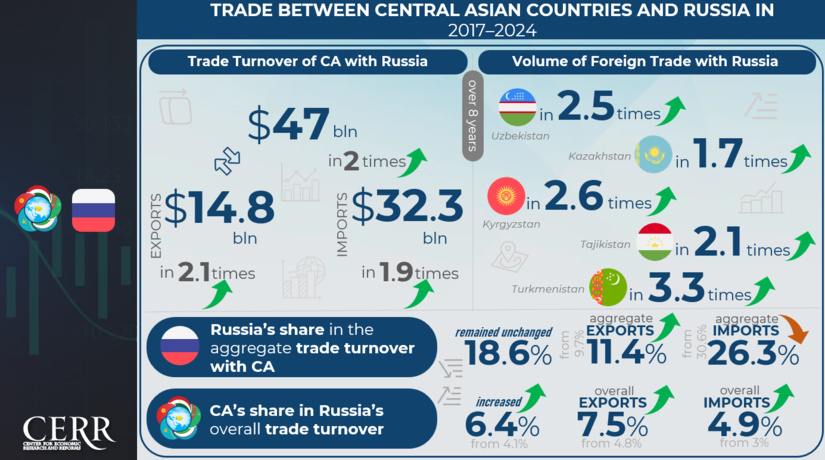Infographics: Trade and Economic Cooperation Between Central Asia and Russia in 2017–2024
CERR has prepared a brief analytical overview and a series of infographics illustrating the dynamics of trade and economic cooperation between the Central Asian countries and Russia over the period 2017–2024.





















leave a comment